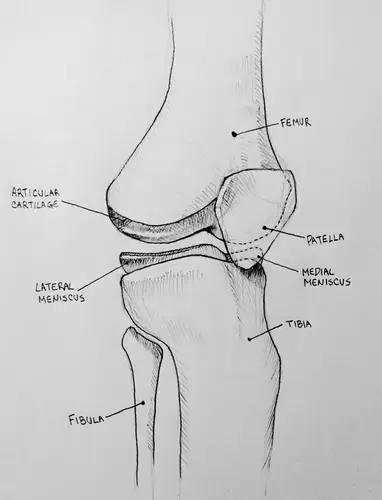The body is nature’s perfect machine. The versatility of the body is beyond impressive. Every single creature has evolved to excel at specific activities, the light and hollow bones of the birds contrast dramatically with the massive structure of the elephants. All vertebrated creatures are variations of the same anatomical model. Despite the strengths and weaknesses of different species, there are more similarities among the same body parts of different species than between different parts of the same body.
COMPARING TWO “ARMS”
These two images (not at scale) belong to the front extremity or two species, the similarities are remarkable, even when those two animals are dramatically different.

The structure on the left is designed to move up and down over 50 times per second. The anatomy to the right can carry over 7,000 lbs.
The left extremity is, in reality, a hummingbird wing, designed for extreme speed, lightweight, and extending less than 3 inches long. The appendix on the right belongs to a rhinoceros, extending around 4 feet long and molded for power and extremely heavy loads.
UNDERSTANDING THE BASICS OF THE PERFECT MACHINE
We are all the proud owners of the perfect machine. Crafted and designed after millenniums of evolution by the reproduction of the fittest. This sophisticated device comes without an owner’s manual or blueprint. A significant amount of people are not remotely aware of how their body works or how to take care of it.
This post is an attempt to explain, at an extremely basic level, how the musculoskeletal part of the anatomy functions.
The body, unlike any other machinery, must last a lifetime.
BONES
To dissect the formation that makes everything possible it is essential to start with the rigid portion of the structure, better known as the skeletal system. The skeleton anchors all the moving pieces. The shape, thickness, and length of the bones are what make them so specialized to handle certain motions, tension, or pressure. The robustness of the femur (for example) promptly indicates a body part designed for strength and speed, while the intricated shape of a vertebra gives a clue of the delicate and versatile nature of the body part to which it belongs.
With age, we lose bone density, which weakens the structure. Taking preventive measures to slow that process is essential for an active long life.

MUSCLES & TENDONS
Muscles are the engine of every single motion we perform. The skeletal muscles connect two or more bones and contract via electrical impulses. Muscles contract, reducing the distance between the two points they connect (those are the agonist muscles). By shortening the distance, a muscle will alter the angle of the joint associated with the group of bones, allowing the motion. Antagonistic muscles are those that oppose each other over the same joint, allowing for it to move in two or more directions; but also we have synergist, which are the muscles that assist the agonist in certain motions, and the fixator, which stabilizes the origin of the agonist muscles, making its contraction more efficient. Muscles connect to the bones through the tendons. Tendons can handle a significant amount of tension, but their lack of elasticity makes them susceptible to ruptures (which can only be repaired by surgery)

LIGAMENTS
Ligaments are fibrous tissue that connects bones. Being unable to contract or relax at will, they work as stabilizers for the joints. By providing a flexible connection with a limited range of motion, ligaments help to prevent dislocations and even bone fractures. Ligaments can stretch and re-shape to allow pretty extreme movements. Due to their primary function of stabilization and protection, they are often the first in line to get hurt. Ligament injuries are common; in some cases, they heal with time and immobilization (as in the case of sprains), and in other scenarios, surgery is required to repair them. Strong and balanced muscles, as well as healthy tendons, also help with the stability of the joint, creating a symbiotic relationship between them.
Muscular imbalance, which is the definition of uneven strength between two antagonistic muscles, takes the joint out of its natural alignment, creating extra tension of the ligaments.

CARTILAGES
Every joint has the interaction of two or more bones. Every point of contact between the two bones has articular cartilage to protect them from friction or impact. Cartilages are remarkably strong, flexible and smooth tissue that shapes around the joint it shields. Its thickness varies from joint to joint: the cartilage of the knee (meniscus) is over six times thicker than the cartilage of the wrist (triangular fibrocartilage complex).

BURSAE AND SYNOVIAL FLUID
There are around 160 bursae in the adult human body. Bursae are flexible and lubricated sacs, which consist of a synovial membrane, filled with synovial fluid. Its function is to alleviate the friction between hard tissue (bones) and soft tissue (skin, muscles, tendons, tendons, or ligaments). Bursitis is a relatively common and painful condition in which the inflammation of the bursa causes extra friction on the joint.

SEEKING HELP FROM THE PROFESSIONALS
The body is truly a fascinating machine. What is explained here is not even the tip of the iceberg. It is possibly more similar to the smallest feather of a penguin standing on the top of an iceberg.
Centuries of studies, as well as countless writings about the human body, still don’t explain it completely. That is why it is imperative to consult with the doctor at the first sign of any malfunction.
